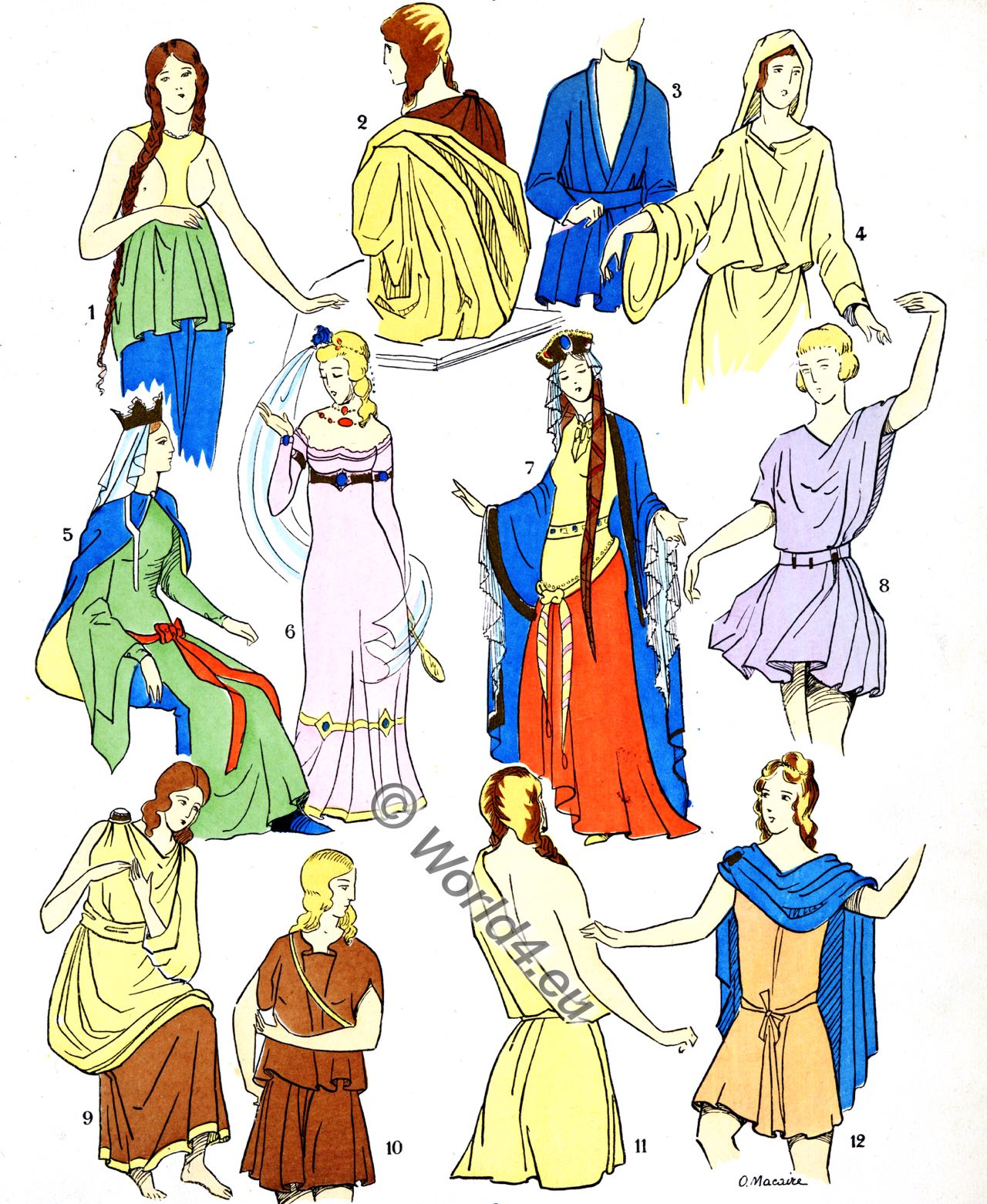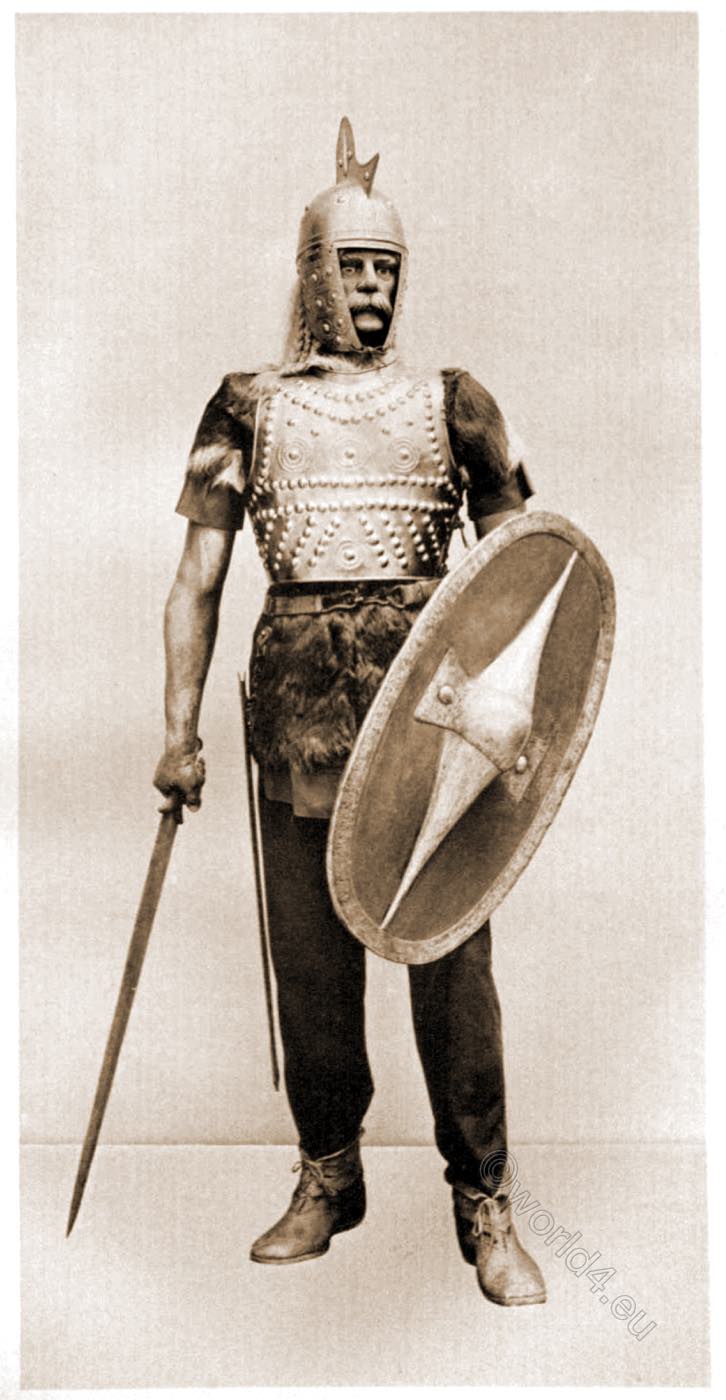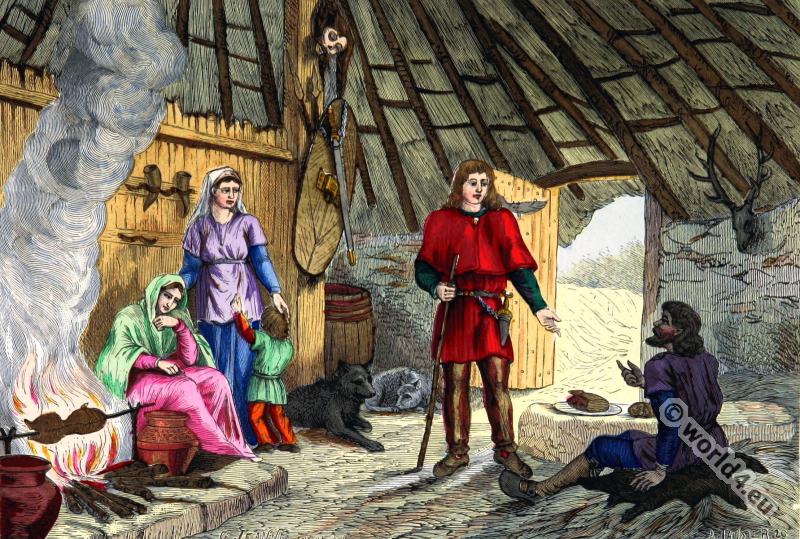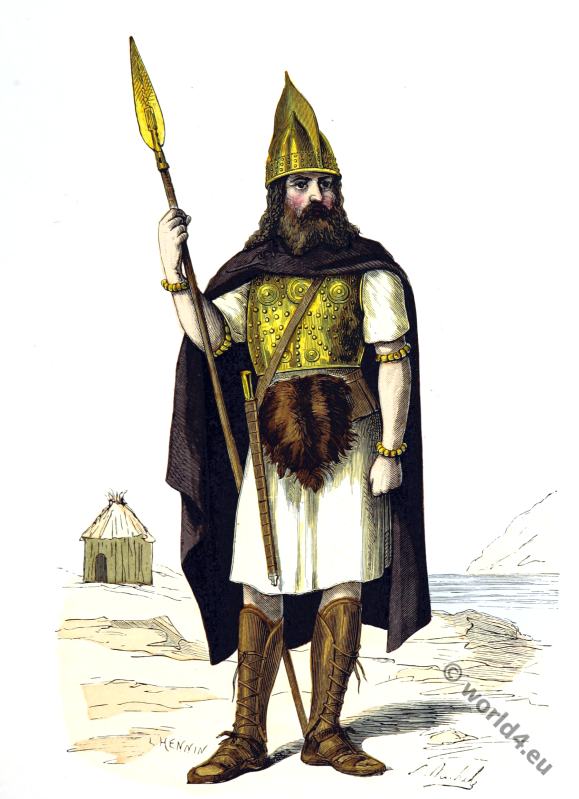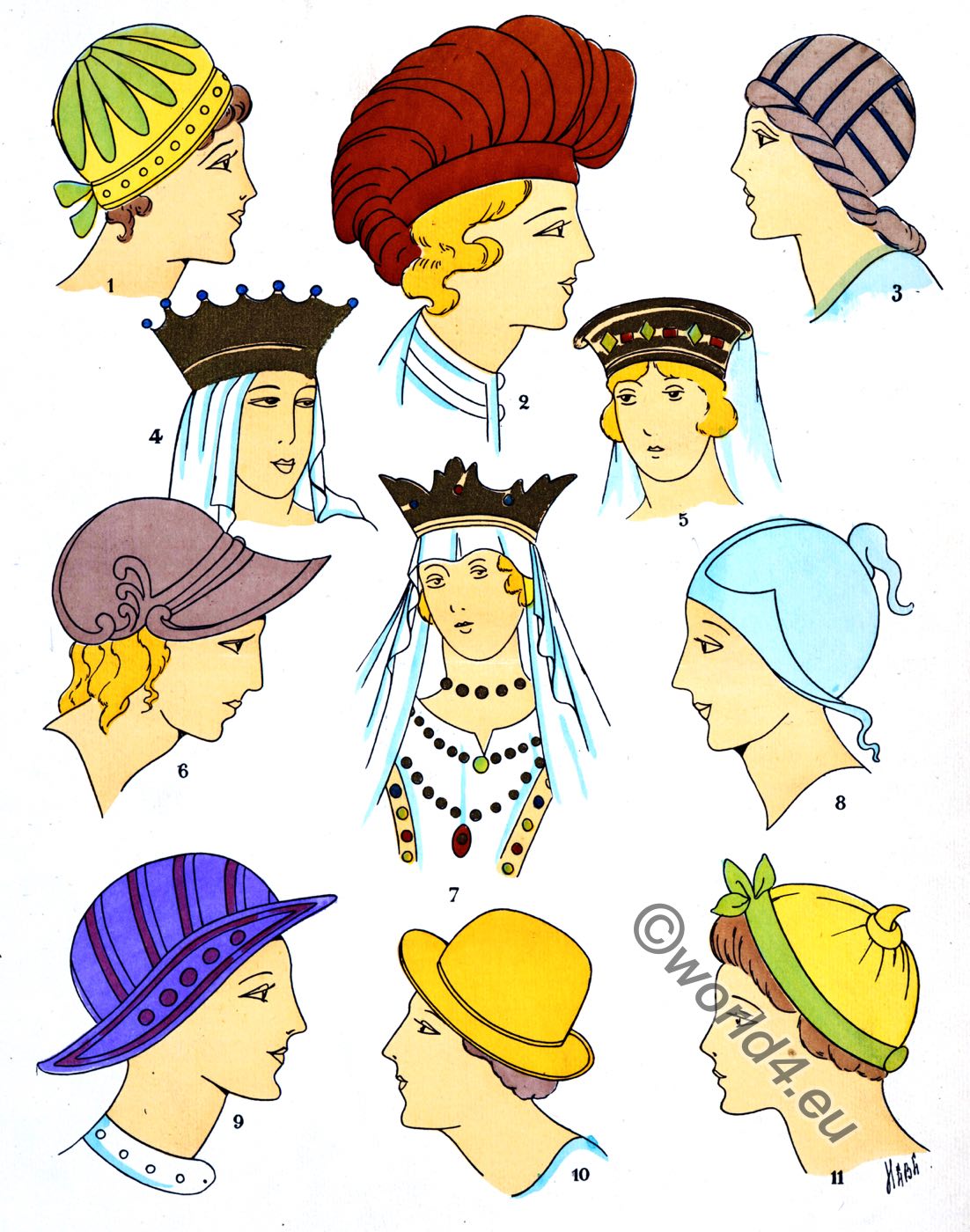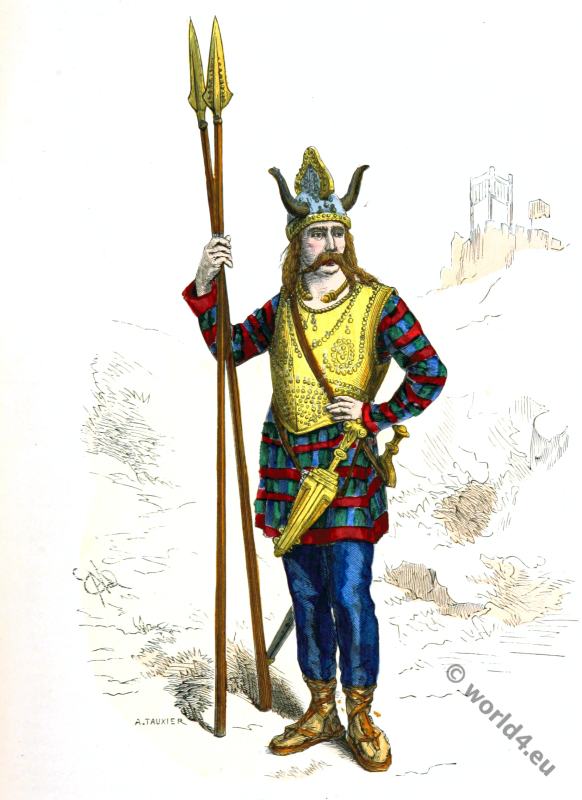
The comfortable costumes of the Gauls.
Part XII. GAUL.
Fashionable Women
Plate 1.
- Fig. 1. From B. C. 1600 up to Caesar; Costume of Euxetra. Foundation of Marseilles. Loose blue draped bodice.
- Fig. 2. Gallic lady, 6th century. Costume of Fredegonda, mother of Clotairus. Long robe with two belts. One under the breast and the other very loose round the waist. Robe blue, belts yellow and green, cloak green.
- Fig. 3. From the preaching of the Gospel to the days of the Franks and Huns. Costume of a Gallic lady or Cimbrian captive. Bright blue robe with loose folds.
- Fig. 4. Women of Germania. Silver grey collarette trimmed with cerise.
- Fig. 5. White Gallo-Roman consular robe with loose folds.
- Figs. 6.-7. From the 5th to the loth centuries, after monuments to the Merovingian Kings (from Clovis to Dagobert) France. Long white robe, bright green cloak.
- Fig. 8. From Caesar to the Gallic Empire: Robe of a Gallo-Roman lady. Veil covering the head and a loose robe of the same shade as the veil.
- Fig. 9. Gaule-Roman lady. Bright blue loose robe. Gold trimming. Cerise and gold belt. Inset of robe green.
- Fig. 10. B. C. 600 to Caesar, Gallic lady; bright green robe.
- Fig. 11. From the Gallic Empire to the preaching of the Gospels. Veil and robe of the same shade. The skirt in the form of a tunic. (From a statue on the column of Cussy.)
Fashionable Ladies.
FASHIONABLE LADIES. – Gallic women in the third century, had their hair arranged so low and flat that it is hard to put a sex to the rude and mutilated carvings existing to-day, when the subjects are without any distinctive dress.
Carvings on Gallo-Roman tombs show the women dressed in the penula, sometimes they have an apron over a very short tunic. They are slaves and free women of the Lower Empire (290-490 A. D.).
COLOURS. – The sage of Artois were fixed, by Diocletian law, at a maximum of Frs 375; the price seems exhorbitant for so small a mantle but it should be remembered that both material and dyeing were remarkable.
In the 4th century Gaul continued to erect statues to its governors. Those remaining today from that period show the toga, draped in a manner that is not common in antiquity. The pouch produced by a mass of folds in front has disappeared.
A portion of the edge is turned back and held tight against the bust at the height of the chest.
Ceaseless sufferings to which Gaul was subjected, were unable to prevent attention, perhaps due to indifference but which found its origin in self-respect, being paid to dress.
In field and town men and women were to be seen well combed and washed, no matter how poor a wretch the man might be, he tried to put smartness into his rags.
Under the Merovingians, the smart Gallic woman possessed a very complete wardrobe; fine tunics (camisae) cuffs (manicae) head-dress (cufeae) fibulae etc., amongst which gold and precious stones were rife.
We have unfortunately little knowledge as to what was the dress of Gallo-Romans in the 6th and 7th centuries.
Carolingian period. Pictures of Carolingian persons show us the women dressed invariably with two dresses and a cloak covering the head like a veil.
The outer dress, with short wide sleeves, is wide-fitting, often cut to half-way up the legs, leaving the under dress, with flat sleeves, showing. Ornamentation consisted of round pieces or caliculas on the ground, strips on the edges and a large clave ornamented with embroidery. On certain occasions the pallium did not cover the head. W e have the story of a hunt at which the daughters of Charlemagne took part. They are described as having their hair held in small bands and wearing diadems of gold and precious stones.
The mantle falling from their shoulders is of hyacinth silk in Rothaide’s case, and purple for the others. A border of sable is round the edge of Theodrade’s mantle.
The poet expends himself in the search for words to describe the dazzling effect of the rich apparel completed by a shoe called the “cothurnus”.
CAPE. – In addition to the pallium, women made use of a sacerdotal garment called the Cape. After King Harold was baptised, his wife, who had also received the sacrament, was dressed in a magnificent costume, the principal article of which was a gold-brocaded cape.
Source: The history of the Feminine Costume of the world. The comfortable costumes of the Gauls. Paul-Louis de Giafferri (1886-1943). Published: 1926.
Continuing
Discover more from World4 Costume Culture History
Subscribe to get the latest posts sent to your email.

